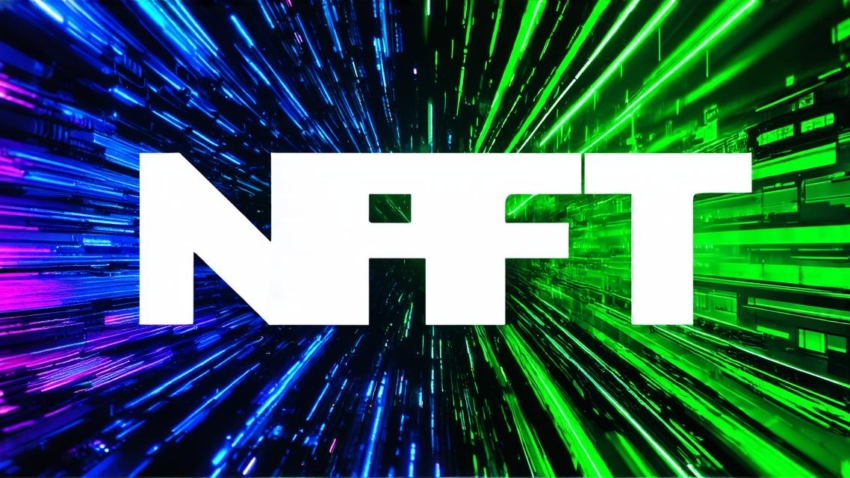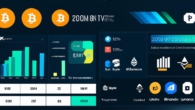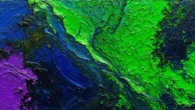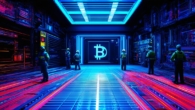
Is there a future for NFTs
Introduction:
NFTs, or non-fungible tokens, have taken the world by storm. These unique digital assets have captured the imagination of collectors and investors alike, with their ability to represent ownership over one-of-a-kind items such as art, music, sports memorabilia, and even in-game items. But is there a future for NFTs beyond the current hype? In this article, we will explore the NFT market’s current state, its potential, and examine whether NFTs have the potential to change the way we interact with digital assets in the future.
What are NFTs?

NFTs are digital assets that are unique and cannot be replaced by another asset. They are typically stored on a blockchain, which provides transparency, security, and immutability for the ownership of these assets. The first NFTs were created in 2017 as part of the Cryptokitties project, where users could buy, sell, and breed digital cats that were stored on the Ethereum blockchain. Since then, the NFT market has grown exponentially, with millions of dollars being spent on buying and selling unique digital assets.
The Current State of the NFT Market:
According to a report by Allianz Research, the global NFT market is expected to reach $19 billion by 2023, growing at a CAGR of 87.7% from 2020 to 2023. The report states that the NFT market has experienced a surge in demand over the past year due to the COVID-19 pandemic, which has forced people to spend more time online and explore new ways to connect with each other.
NFTs have also gained traction in the art world, where they are being used to sell unique digital art pieces that can be owned and displayed like traditional paintings. The NFT market has disrupted the art world by allowing artists to monetize their work directly and creating new opportunities for collectors to own rare and valuable art pieces.
The Future of NFTs:
The potential of NFTs is vast, and many experts believe that they have the potential to change the way we interact with digital assets in the future. Here are some ways in which NFTs could evolve in the coming years:
- Integration into gaming and entertainment: The NFT market has already started to disrupt the gaming industry by allowing players to own unique in-game items that can be bought, sold, and traded like traditional assets. This trend is likely to continue as more games adopt NFT technology, creating new opportunities for gamers to monetize their in-game items.
- Tokenization of real-world assets: The tokenization of real-world assets is another area where NFTs could have a significant impact. By representing ownership over physical assets such as real estate, cars, and collectibles on a blockchain, NFTs could make these assets more liquid and accessible to investors.
- Creation of new business models: NFTs could also enable the creation of new business models that were not possible before. For example, artists could use NFTs to monetize their work directly, bypassing traditional galleries and art dealers. Similarly, brands could create unique digital assets that could be used in marketing campaigns or given away as rewards to loyal customers.
- Improved security and transparency: The use of blockchain technology in NFTs provides a high level of security and transparency for the ownership of digital assets. This could lead to greater trust in the digital asset market and enable more people to invest in digital assets without worrying about fraud or counterfeiting.
FAQs:
What are NFTs?
NFTs, or non-fungible tokens, are digital assets that are unique and cannot be replaced by another asset. They are typically stored on a blockchain, which provides transparency, security, and immutability for the ownership of these assets.
2. How big is the NFT market?
According to a report by Allianz Research, the global NFT market is expected to reach $19 billion by 2023, growing at a CAGR of 87.7% from 2020 to 2023.
3. What industries are using NFTs?
NFTs have already started to disrupt the gaming industry and the art world, but they could also be used in other industries such as real estate, cars, and collectibles.
4. What are the potential risks of investing in NFTs?
As with any investment, there are risks associated with investing in NFTs. These risks include market volatility, lack of regulation, and security concerns. It is important to do your own research and consult with a financial advisor before investing in NFTs.
Summary:
In conclusion, the future for NFTs looks promising. The current NFT market has already disrupted several industries, and its potential to create new business models and tokenize real-world assets is vast. However, it is important to remember that NFTs are a relatively new technology, and there are still risks associated with investing in them. As the NFT market continues to evolve, we will need to stay vigilant and ensure that these technologies are used ethically and responsibly.







